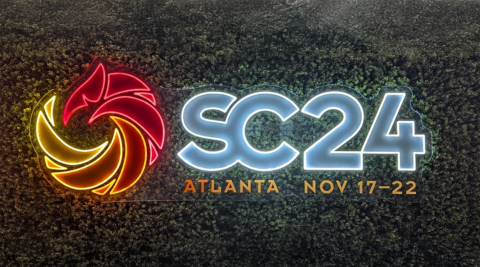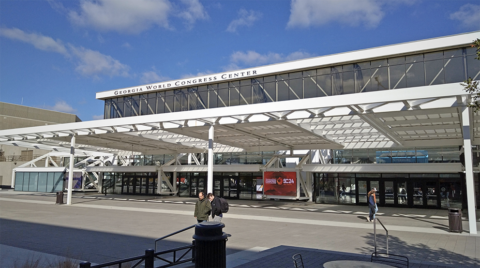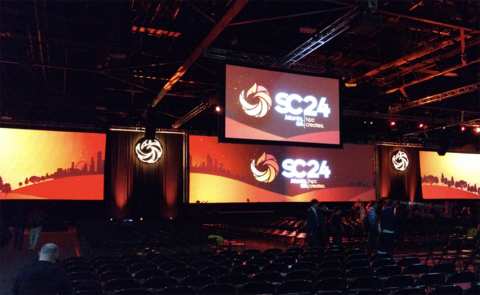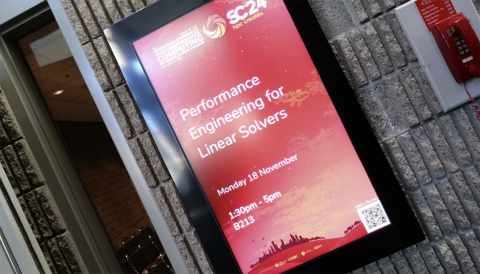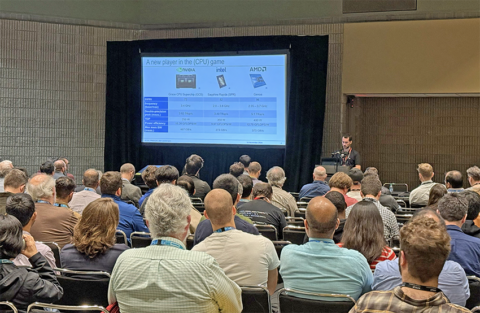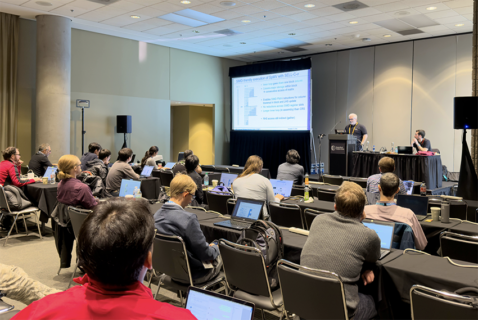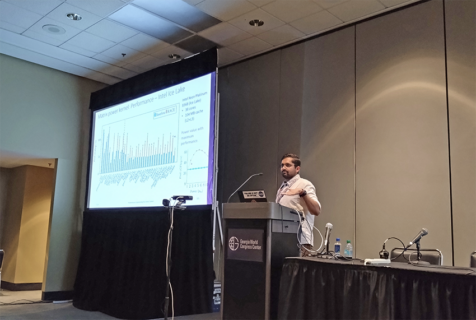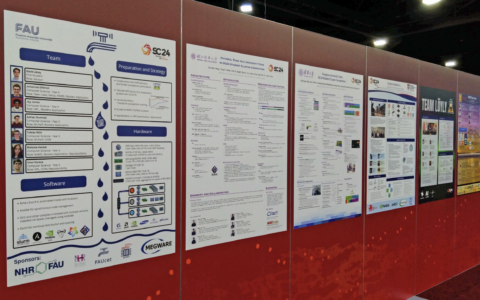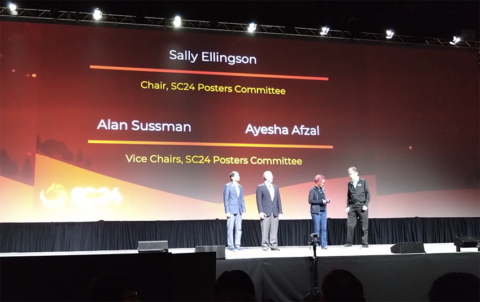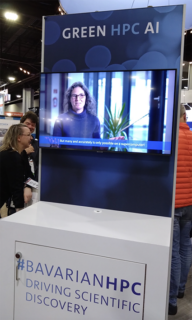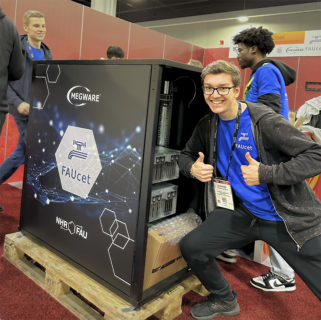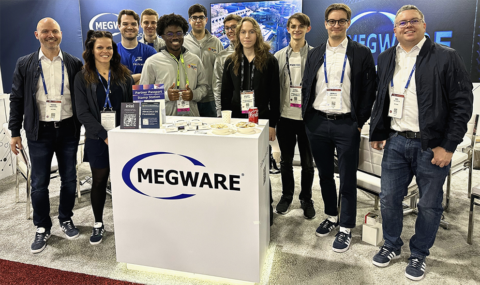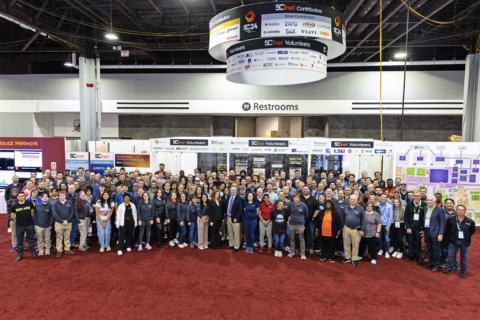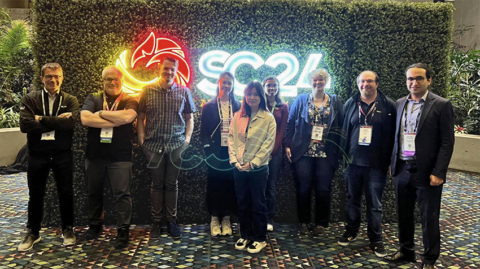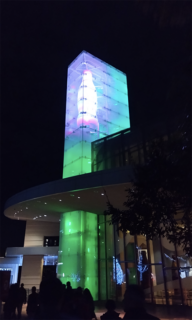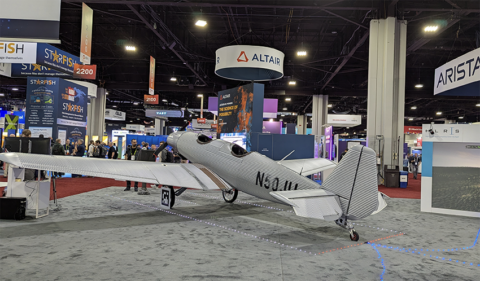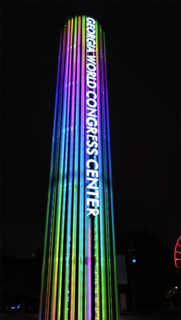NHR@FAU at SC24 – Think big, bigger than ever!
“HPC creates” was the motto of this year’s Supercomputing Conference (SC24), which took place in Atlanta, Georgia from November 17 to 22. The International Conference for High Performance Computing, Networking, Storage, and Analysis is the largest and best-known event for HPC experts worldwide, and it offers an extensive and diverse technical and scientific program as well as numerous exchange opportunities about innovations and best practices. This year, over 18,000 attendees and 494 exhibitors made SC24 the largest SC conference to date. NHR@FAU was once again part of the community that comes together at SC to learn, teach, and grow. The program is designed to share knowledge in all areas of HPC with a focus on the latest developments, including quantum computing, big data, and artificial intelligence.
Supercomputing and sports: How do they fit together? Pretty good. Jan Laukemann, our PhD student, proved it by again winning the “SCinet 5K run,” which took place on the Sunday after the preparation week. Jan focuses on application optimization and performance engineering for HPC systems and novel algorithms for scalable linear algebra, tensor decomposition, and graph computations. This year, he was accepted again into the SCinet program, where he helped set up and maintain the complex network infrastructure of the SC24 conference. Every year at SC, SCinet builds the world’s fastest temporary internet service, just for the purpose of providing the conference with top-notch connectivity.
Together with colleagues from the LMU Munich, the TU Munich, and the Munich Quantum Valley, the NHR@FAU was pleased to welcome numerous interested guests at the joint LRZ booth “#Bavarian HPC – Driving Scientifc Discovery.” They lingered to chat about how the centers support science with hybrid quantum and supercomputing, software, and tools. Sponsored by the German supercomputing company MEGWARE, an HPC and computer history quiz gave guests the opportunity to win great prizes and engage in conversation.
In addition to the social exchange, the NHR@FAU also actively participated in the scientific program with tutorials, workshop contributions, and poster presentations. Sunday started with the presentation of the paper “EE-HPC, a Framework for Energy-Efficient HPC System Management” as part of a workshop on the topic of sustainable supercomputing. This work emerged from a collaboration among RWTH Aachen University, HPE, NHR@FAU, and the German Climate Computing Center (DKRZ) in the BMBF-funded project EE-HPC. On Monday, Jan Laukemann showcased the work “Microarchitectural Comparison and In-Core Modeling of State-of-the-Art CPUs: Grace, Sapphire Rapids and and Genoa” at the renowned workshop “Performance Modeling, Benchmarking and Simulation of High Performance Computer Systems” (PMBS) about the comparison of the microarchitectures of the latest CPU cores from Intel, AMD and NVIDIA. The room was packed with interested listeners – PMBS is one of the most popular and long-standing workshops at SC. On the same day, the half-day tutorial “Core-Level Performance Engineering” by Jan Laukemann and Georg Hager offered an introduction to code execution and optimization at the CPU core level. The next tutorial was scheduled on the same day, where Georg Hager and Christie Alappat, together with Hartwig Anzt (TU Munich), talked about “Performance Engineering for Linear Solvers,” in which the basics of performance analysis and optimization of linear solvers for sparse problems were explained. Both tutorials provided hands-on exercises so attendees could apply the concepts right away.
Spread over several days, NHR@FAU presented its software projects – primarily the LIKWID Tool Suite, the ClusterCockpit Monitoring Framework and the OSACA Performance Modeling Tool at the LRZ booth.
Finally, two research posters were presented in the Research Posters track: “Exploiting Data Compression and Low Precision for Exascale Fusion Turbulence Simulations” by Jan Laukemann and coworkers from the ongoing BMBF project “DaREXA-F” and “DisCostiC: Simulating MPI Applications Without Executing Code” by Ayesha Afzal, Georg Hager, and Gerhard Wellein. Ayesha’s poster narrowly missed the “Best Research Poster Award” but made it into the final round of six, which is a significant achievement in itself. Ayesha’s research revolves around performance modeling, visualization, and simulation of highly parallel programs. She is also active in the “Women in HPC” effort, through which several FAU students could travel to SC24 via a sponsorship program. Thomas Gruber and Georg Hager from NHR@FAU served as mentors for three of them, helping them navigate the vast conference program.
Last but not least, a team of six brilliant FAU students (named “FAUcet”) competed in the Student Cluster Competition (SCC) against ten other international SCC teams. MEGWARE, the supercomputer company from Chemnitz, supported the team with bleeding-edge hardware as in previous years. This time, the team from Tsinghua University in Beijing took home the SCC24 Championship. Team FAUcet, hindered by severe network problems in their ad-hoc cluster setup, still had a great time with intense coding, networking, and the experience of a huge international conference.
Finally, some very good news at the end: The 64th Top500 list was released at the SC24 and ranked NHR’s new cluster “Helma” with a LINPACK performance of 16.94 Pflop/s 79th in the Top500 list of the fastest supercomputers in the world. This is the first two-digit ranking for any FAU system, ever.
As always, the SC24 was an impressive event and gave the opportunity to make new contacts, exchange ideas, and collect lots of great new impressions.

